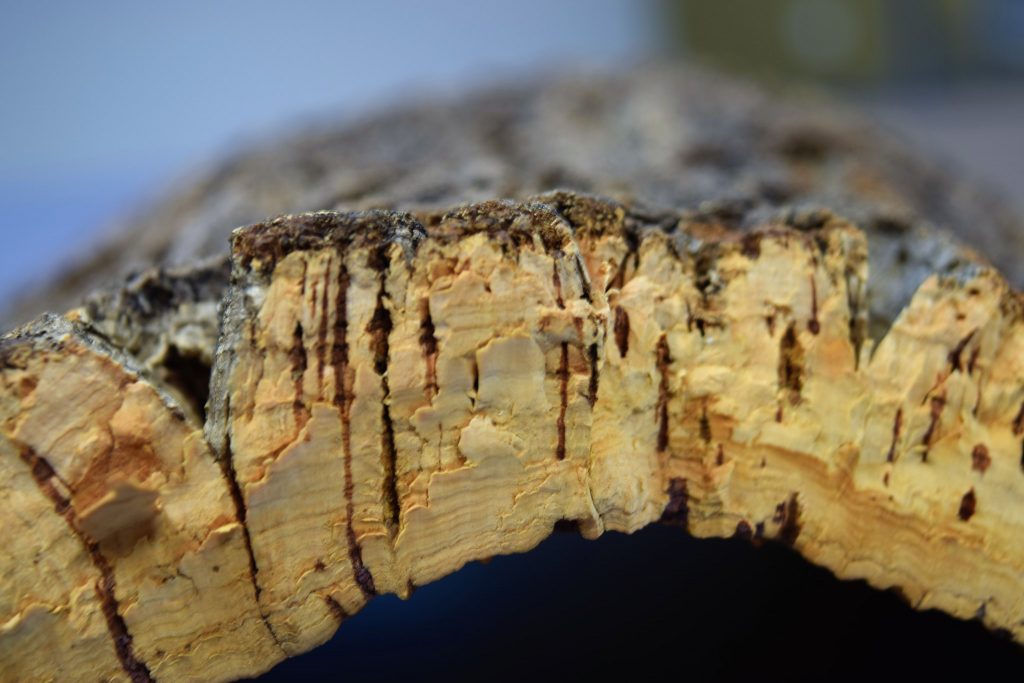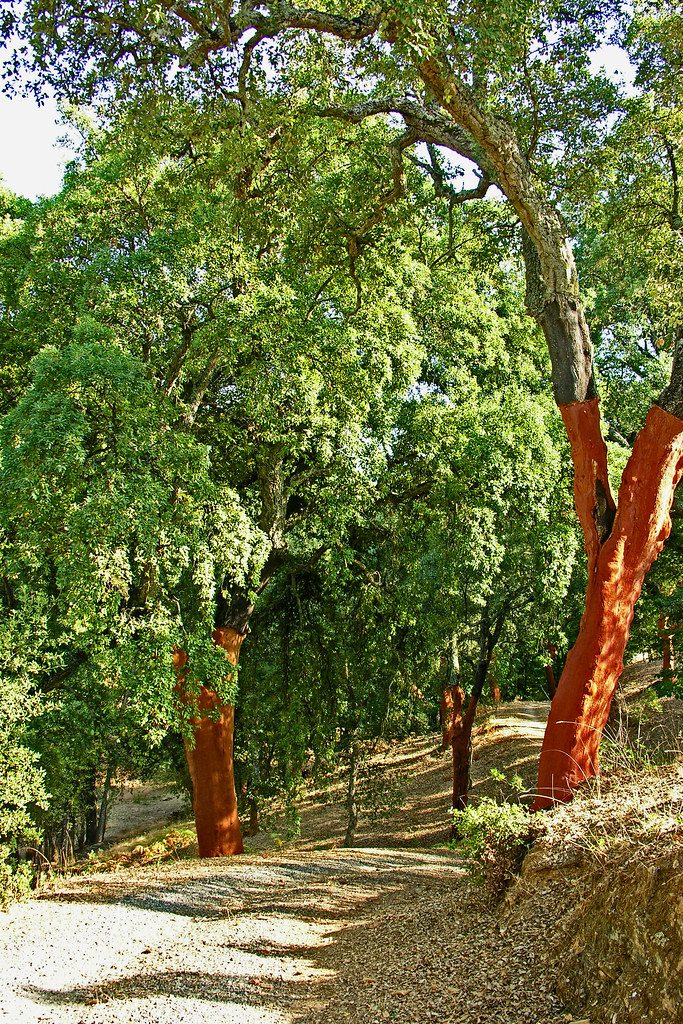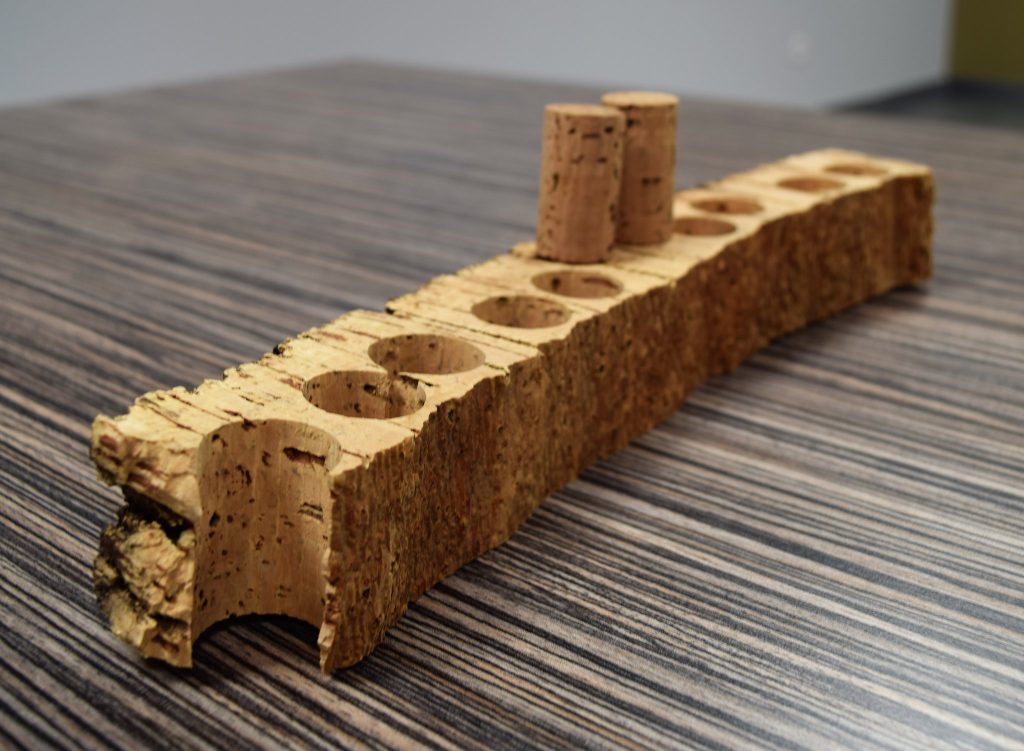Often when one thinks of how climate change affects the wine industry, images of grape vines scorching under intense heat or being pummeled by ever-intensifying hail storms. One might think of how microclimates around the world are changing such that new or different grape varieties may need to be planted and managed to adapt to a “new normal”, whatever and whenever that may be. [side note: for a meta-analysis of the effects of climate change on the global wine industry, see my article here].

One area where we sometimes overlook in regards to the effects of climate change on the wine industry relates to not the grapevines but the trees. Specifically, how climate change might affect oak tree growth for barrels, and also how it might affect cork tree growth for the production of cork stoppers. This article will focus on the latter.
A lot of questions can be asked in regards to how climate change might affect cork. How will it affect tree growth? Chemical composition of the bark? Ability of the cork to protect wine in the ways it has in the past? Some studies have suggested it’s not good—a few years ago one study found that the chemical composition of cork trees might change under climate change, as well as increased numbers of “air pockets” within the bark, decreasing the quality of the cork and threatening the quality of the wine stored under corks made from the affected trees (see the details of that study here).
A new-ish study, published in the March 2019 issue of Agricultural and Forest Meteorology, aimed to evaluate the effects of drought – which are becoming increasingly more frequent and severe in places under climate change – on cork tree growth, focusing on the different stages of the 9-year growth cycle that cork forest managers typically practice for cork stopper production, and how droughts during any one of these stages might affect cork tree growth and subsequent recovery.
Brief Methods
Cork samples were collected in 12 Portuguese central-west montado estates in the Tagus River basin.
A total of 2081 cork samples were collected, each representing 8 years of growth since cork stripping occurs every 9 years. Out of these samples, 1403 were analyzed.
Samples were collected between 1994 and 2016, allowing for the study of growth between 1986 and 2015, which included several drought events at varying stages during the cork growth cycle.
Cork ring thickness was used as the measure to determine growth rate for any given year and was compared to known drought events to see how cork growth may have been affected during these times.
“Pointer years” were determined to pinpoint events of climatic extremes. A year was considered a pointer year if at least 55% of the trees had at least 30% increase or decrease in cork growth when compared with the average growth of the previous two years.

“Through the Cork groves, Sierra Norte, Andalucia, Spain” by PhillipC is licensed under CC BY 2.0
For negative pointer years (when there was at least 30% decrease in cork growth in at least 55% of the trees), the following measures were also calculated: resistance (growth during vs. before drought), recovery (bouncing back from any damage related to the climatic event), resilience (growth after vs. before drought), and relative resilience (resilience weighted by any damage done during the climatic event).
Selected Results
- 5 pointer years were identified:
- 1 positive: 2007
- 4 negative: 1995, 1999, 2005, and 2012
- Cork growth the year immediately after a negative pointer year was very good (i.e. growth was always greater than the average growth that year).
- 2005 was a more extreme drought, which saw significantly more trees affected in terms of decreased growth.
- While 2005 saw significant loss in growth, it was also the year that saw the greatest average recovery.
- 1999 was a year of extreme drought in the winter and severe drought the rest of the year, but had the lowest recovery rate of all the negative pointer years.
- The drought in 1995 wasn’t as severe as it was in 1999, and trees also saw greater recovery.
- Recovery was the most variable parameter across the years.
- Resistance was highly and positively correlated with less severe drought conditions.
- Resilience was positively correlated with less severe drought conditions (though not as much as resistance).
- Recovery and relative resilience were positively correlated with more severe drought conditions.
- The best linear model for predicting recovery and resilience was the full model including all fixed effects studied: drought severity during 3 different times of the year as well as the age of the new cork growth; plus the random effects studied: site, tree, nested on site.
- The best recovery, resilience, and resistance happened when the new cork growth was between 3-6 years old.
- Recovery for new cork growth less than 3 years old was 17% lower than the recovery of the 3-6-year-old cork growth.
- Recovery for new cork growth above 6 years old was 8% lower than the recovery of the 3-6-year-old cork growth.
- Resilience for new cork growth above 6 years old was 9% lower than the resilience of the 3-6-year-old cork growth.
- Resistance for new cork growth above 6 years old was 14% lower than the resistance of the 3-6-year-old cork growth.
Conclusions
Overall, the results of this study indicate that severe drought negatively impacts cork growth. As one would guess, more severe drought led to greater decreases in cork growth as well as a greater number of trees being affected by the drought.
Interestingly, despite the negative impact on cork growth during a drought, this study showed that cork has great resilience and recovery and can get back to previous ecological performance levels after water becomes available again.
This study also found that the age of the cork growth impacted its ability to recover from drought damage (as well as resistance and resilience). Specifically, the older the cohttp://www.academicwino.com/2015/12/defects-oxygen-ingress-cork-x-ray.html/rk, the less it is able to recover from growth damaged cause by the drought.
Despite these findings, the results were actually somewhat variable. Specifically, though there were some correlations between recovery, resilience, and resistance on drought severity noted, there wasn’t a clear pattern illustrating these relationships. The researchers noted that there are likely micro-site interactions going on here that could explain the variability, however, these factors were not looked at during this study.
Though there is some variability here, this study does seem to show that cork does seem to have the ability to recover from severe drought conditions, though how much recovery depends upon a variety of factors and is thus not easily predictable.
What this study doesn’t show, however, is how these droughts impact the actual quality of the cork. As mentioned previously, other studies have shown negatively impacts on cork quality, though unfortunately that was not a factor considered in this study.
This study may be helpful in some ways, however, in that if a drought occurs early on or very late in the growth of the new cork, it might be beneficial to delay the next stripping date in order for the cork to achieve the desired thickness, since the younger cork seems to be more affected (and thus grow even less) than “middle-aged” cork. Of course, determining the impact of delaying cork stripping is beyond the scope of this article, so I won’t speak to that today, but it is something that the researchers of this study proposed as an option for mitigating the effects of climate change on the growth of cork trees.
From a simple forest management perspective, this study indicates that yes, cork trees are negatively affected by droughts in terms of their growth, but from a winemaking perspective, this study doesn’t answer any questions related to cork (and thus wine) quality. It would be nice to see a larger study that includes both – and perhaps drawing some parallels or patterns between them, in order to better manage cork forest growth and harvest in a changing climate.
How can we draw to connection between good recovery and poor cork quality seen in previous studies (if that effect was real)? Perhaps the larger air pockets found in a previous study are the direct result of the cork tree rapidly recovering from a drought event once water became available again. This is just speculation, however, and what we really would need is a study combining both structural and chemical composition changes as well as growth changes.

Getting the whole picture, it seems, would be of great benefit for cork forest managers, in order to better plan for a changing climate and make the necessary adjustments to maintain cork quality (if that’s even going to be possible).
Source:
Leite, C., Oliveira, V., Lauw, A., Pereira, H. 2019. Cork rings suggest how to manage Quercus suber to mitigate the effects of climate changes. Agricultural and Forest Meteorology 266-267: 12-19.

1 comment for “The Effects of Drought on Cork Growth – How Climate Change Impacts the Cork Forest”